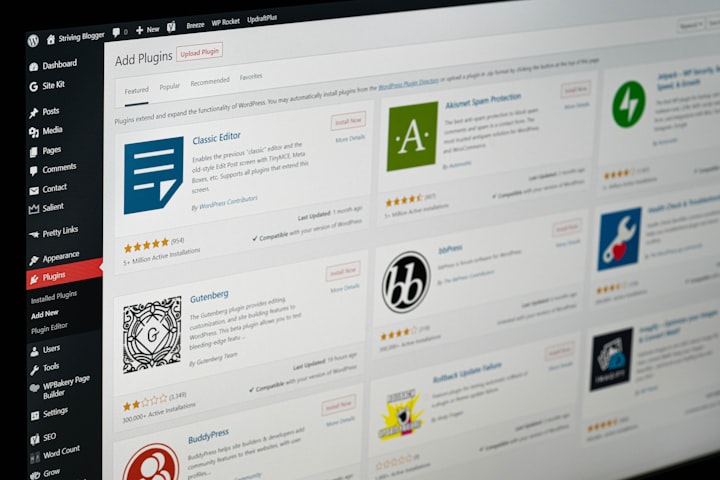Creating Stunning Visuals: A Guide to WordPress Image Optimization
Perfecting WordPress Image Optimization

Hey there! Today, I'm diving headfirst into the captivating world of WordPress image optimization. Let's face it – we all want our websites to be visually stunning, and images play a pivotal role in making that happen. So, I share my personal quest to create dazzling visuals while keeping site performance in tip-top shape.
Let's get started!
The Visual Charisma of WordPress

A website brimming with vibrant images that effortlessly tell your brand's story. It's captivating, right? However, there's a catch – if your images aren't optimized, they can be quite the speed demons, slowing down your site and sending your visitors on a frustrating waiting game.
The Quest Begins: Why Optimize Images?
By reducing the file size of your images without compromising quality, you're ensuring a seamless browsing experience that'll keep your visitors glued to your content.
Step 1: Choosing the Right Format

It all begins with picking the perfect format. JPEG, PNG, GIF – these aren't just random letters thrown together; they're your tools for crafting visual magic. JPEGs are your go-to for photographs, while PNGs work wonders for images with transparent backgrounds. GIFs? Well, they're the animated charmers that steal the show.
Step 2: Embracing the Power of Dimensions

Size matters – especially in the digital realm. Before you upload that jaw-dropping image, give it the right dimensions. Scaling down your images using CSS is like fitting into your favorite pair of jeans – it feels great, and you look fabulous. Resizing your images to the right dimensions is like tailoring a bespoke suit - it not only looks incredible but fits perfectly too. For the best results, these five tips will do the magic.
- Think of pixels as the tiny building blocks that come together to form your image masterpiece. Resizing an image isn't just about making it bigger or smaller; it's about orchestrating those pixels to create a symphony of visual delight.
- Ever visited a website where an image feels like it's bursting out of the screen? Or perhaps an image so tiny it requires a magnifying glass? Optimized dimensions ensure your images snugly fit the available space, providing an immersive experience that's easy on the eyes. Say goodbye to pixelated nightmares and awkwardly cropped visuals.
- A modern website needs to cater to a variety of devices, from the majestic desktop to the petite smartphone. By resizing images for different screen sizes, you're ensuring that your visuals adapt gracefully, regardless of the device your audience uses.
- Speed is the secret sauce to a successful website. Nobody wants to wait around while images load at a glacial pace. Optimizing image dimensions isn't just about aesthetics; it's about turbocharging your site's loading time. By serving the right-sized images, you're giving your website a boost into speed racer mode, delighting visitors and search engines alike.
Step 3: Picking the Right Plugins

Ah, plugins – the superheroes of WordPress. Here, we're talking about those nifty image optimization plugins that sprinkle some magic dust on your visuals. WP Smush, ShortPixel, Imagify – these are your sidekicks, ready to compress those images without breaking a sweat.
Step 4: Quality vs. Size: The Ultimate Balancing Act

It's a classic showdown: quality vs. size. But guess what? You don't have to choose sides. With modern image optimization techniques, you can maintain jaw-dropping image quality while keeping your file sizes in check. It's like having your cake and eating it too.
Step 5: Lazy Loading – Let's Get Lazy!

No, we're not promoting laziness, but "lazy loading." It's a technique that loads images only when your visitors scroll down, saving precious loading time and ensuring a smooth experience from top to bottom.
Final Verdict!
And there you have it – my journey into the captivating realm of WordPress image optimization. As we bid adieu for now, remember that creating stunning visuals doesn't mean sacrificing performance. With a dash of optimization magic, your website will be a visual symphony that keeps your audience coming back for more.
So, until next time, keep optimizing and keep dazzling!
About the Creator
Muhammad Adnan
Muhammad Adnan: Crafting Dreams, One Word at a Time. Immerse yourself in the magic of storytelling, where imagination knows no bounds.





Comments
There are no comments for this story
Be the first to respond and start the conversation.